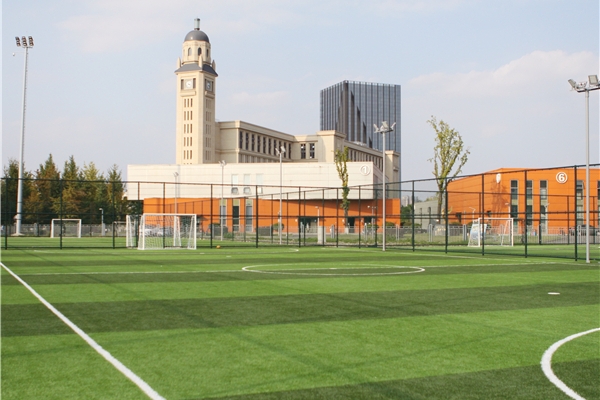即可将网页分享至朋友圈
为搭建我校博士后之间的学术交流平台,促进学术水平提升,学校博士后管理办公室组织开展博士后学术沙龙活动。本次沙龙由我校博士后Antony Stalin、武强、隆昶、张小锋分享其研究成果,诚挚邀请感兴趣的师生参加。
一、时 间:2022年4月15日(周五)14:30
二、地 点:腾讯会议

三、主办单位:电子科技大学博士后管理办公室
四、承办单位:基础与前沿研究院
五、活动安排:
报告一:
(1)主 题:Computational analysis of acetylcholinesterase 1 (AChE1) inhibition by embelin and its derivatives
(2)主讲人: Antony Stalin 基础与前沿研究院博士后
(3)交流内容:
In this talk, we briefly discuss the acetylcholinesterase 1 (AChE1) inhibition by natural phytochemicals. According to a report from WHO, mosquito-borne diseases have spread throughout the world, affecting about 350 million people worldwide. Currently, various synthetic chemical pesticides such as organophosphates, pyrethroids, carbamates, etc., are used to control mosquitoes worldwide. As these pesticides are used for a long time, they contaminate the soil, affect plant growth and react with other beneficial organisms. In addition, most mosquito species have developed resistance to these pesticides. Due to the increase in mosquito populations of Ae. aegypti and Cx. quinquefasciatus in recent years, there is a need for alternative, safe, and effective compounds to minimize the use of chemical insecticides and protect beneficial organisms and the environment.
Acetylcholinesterase (AChE) is an important enzyme responsible for the transmission of nerve signals across synaptic pathways. In general, pesticides inhibit AChE enzyme activity and terminate nerve signal transmission through the synaptic pathway. Due to the signal blockade, the concentration of acetylcholine (Ach) in the neuromuscular junction in the central nervous system is increased and the action potential in the brain is disrupted. Due to the inhibition, nerve function is impaired and mosquitos’ larvae die.
Most pesticides such as organophosphates and carbamates act as potent AChE inhibitors. However, some AChE inhibitors such as malathion interact with human AChE because the AChE enzyme is similar in mosquitoes, insects, and humans. In our study, we chose one of the AChE inhibitors temephos as the standard control, which is one of the organophosphate pesticides used as a mosquito larvicide.
Compounds derived from plants offer various benefits to mankind. In particular, plant compounds have been found to possess promising activities against many disease-causing organisms. In this regard, embelin from Embelia ribes has already shown many promising biological activities.
Therefore, we observed the mosquitocidal efficacy of the compound embelin from the chloroform extract of E. ribes seeds. We also transformed embelin into two derivatives and investigated their mosquitocidal efficacy against Ae. aegypti and Cx. quinquefasciatus mosquitoes. Of the two derivatives studied, vilangin showed stronger larvicidal and pupicidal activities than 6 bromo-embelin against Ae. aegypti and Cx. quinquefasciatus mosquitoes. In addition, vilangin developed significant damage in larval cuboidal cells of the midgut of Ae. aegypti and Cx. quinquefasciatus mosquitoes. This was also confirmed by histopathological analysis of the midgut.
Further, the most effective derivative vilangin was investigated for its physicochemical properties and its interaction with AChE1 by molecular docking and molecular dynamics simulations. We also verified the contribution of binding free energy of vilangin against AChE1 of two mosquito species. This analysis is generally useful to confirm the protein-ligand interaction in the dynamic frameworks and is used by several researchers to validate the results of molecular docking. Moreover, MD simulation confirms the length of the interaction and the stability of the protein during the ligand interaction.
Overall findings suggest that vilangin can significantly inhibit neurotransmission at the neuromuscular junction. It has been reported that tyrosine is one of the most important functional amino acids in the neurotransmission process and helps to upregulate plasma neurotransmitter levels. In our study, vilangin makes strong conventional hydrogen bonding with tyrosine in AChE1 of Ae. aegypti and Cx. quinquefasciatus mosquitoes; therefore, we predict that vilangin could inhibit AChE enzyme activity through the binding of tyrosine and terminate nerve signal transmission via the synaptic pathway.
主讲人简介:
Antony Stalin received a Bachelor's and Master's degree from Annanamai University in 2010 and a Ph.D. degree from the University of Madras, in 2011 and 2017, respectively. He currently works as a Postdoctoral Fellow in the Institute of Fundamental and Frontier Sciences of UESTC. Dr. Antony Stalin is working in the field of Computational drug development. His main research interests include Bio & Chem-informatics, Pharmacognosy, Molecular Biology, animal physiology, energy metabolism, Bio and computational chemistry with applications in drug design, drug discovery, and drug-induced cardiotoxicity analysis (hERG) related to chronic metabolic and infectious diseases. Areas of interest include natural product drug development and synthesis, pharmacophore modeling, ADME Toxicity prediction, virtual screening, structure-based design, drugs into signaling pathways in metabolic and infectious disease through in silico, in vivo, and in vitro levels.
报告二:
(1)主 题:Complex System View on Intelligence Transportation System
(2)主讲人: 武强 基础与前沿研究院博士后
(3)交流内容:
In this talk, we briefly discuss optimizing traffic signal control (TSC) problems via a complex system view. There are three issues: (1) a simple representation of traffic movement but efficient pressure of vehicle queues in a traffic network, named efficient pressure; (2) the advanced method for traffic state representation considering running vehicles ; (3) how to design a reasonable observation range, to further optimize the operation of urban traffic intersections and explore the mechanism of urban traffic conditions.
First, we investigate a simple representation of traffic movement but efficient pressure of vehicle queues in a traffic network, namely efficient pressure (EP), and build a traffic signal settings protocol, including phase duration, signal phase number for TSC. From the analysis of the results from experiments, we suggest that traffic state representation is as important as the models.
Then, we discuss the running vehicles' demand for passing by intersection. We design a novel, flexible and efficient method, namely advanced max pressure (Advanced-MP), taking both running and queuing vehicles into consideration to decide whether to change the current signal phase. We prove our method has achieved state of the art.
Finally, we innovatively present a Partial State (PTS) for traffic conditions acquisition with fewer observations rather than expanding observations. This idea is inspired by the movement of a flock of birds where each bird acts solely based on its local perception. Remarkably, the complex system view boosts the TSC method. This shows that our TSC model uses less information from the traffic state and can boost the TSC methods for industrial deployment. In the future, we will further analyze more expressive traffic state representation to optimize the RL-based TSC methods and compress the RL model. We are trying to develop lower complexity, more vital generalization ability, and more practical application for TSC.
The proposed method aims to attain a balance between simplicity and effectiveness to achieve. In a word, the novelty is a reassessment of applying reinforcement learning in the concerned domain, i.e., traffic signal control.
主讲人简介:
Qiang Wu is Postdoc at University of Electronic Science and Technology of China. He was awarded PhD at Lanzhou University in 2020. He received BS degree in Computer Science and Technology from Beijing University of Posts and Telecommunications in 2009. His research interests include deep learning, reinforcement learning and complex network for Intelligent Transport System.
报告三:
(1)主 题:Reconstruction in bimetallic electrocatalyst during CO2 reduction
(2)主讲人: 隆昶 基础与前沿研究院 博士后
(3)交流内容:
Electrochemical reduction of CO2 with renewable energy is one of the most promising strategies to achieve carbon neutrality. Nanostructured Cu-based bimetallic materials have exhibited great potential to achieve high selectivity towards multi-carbon products such as ethylene, ethanol and propanol. CO spill-over effect or tandem effect has been proposed to explain the enhancement of multi-carbon selectivity during reduction. However, tandem/spill-over theory fails in explaining specific multi-carbon product, regardless of success when explaining the sum of all multi-carbon. To achieve high specific product selectivity, it is crucial but challenging to locate a high performance electrocatalyst and disclose the mechanism behind.
In this talk, the speaker is going to share the new finding in Cu-Au bimetallic systems for CO/CO2 reduction towards n-propanol. A component induced reconstruction has been found and mechanism beyond tandem/spill-over effect is also provided based on in-situ characterizations.
主讲人简介:
Dr. C. Long obtained B.S degree from Harbin Institute of Technology in 2015, majoring materials chemistry. Later, as a joint scholar in National Center of Nanoscience and Technology, he earned PhD degree from Harbin Institute of Technology in 2021, majoring materials physics and chemistry (advisor: Prof. Zhiyong Tang and Prof. Shaoqin Liu). He currently works as a Postdoctoral Fellow in Institute of Fundamental and Frontier Sciences of UESTC, cooperating with Prof. Chunhua Cui. Dr. Long focuses on advanced materials for electrocatalytic applications and their reconstruction behavior.
报告四:
(1)主题:First-Principles Study on the lithium-rich transition metal oxide Li2MnO3
(2)主讲人: 张小锋 基础与前沿研究院博士后
(3)交流内容:
Among all the cathode materials, the lithium-rich transition metal oxide Li2MnO3 has become a research hotspot for lithium-ion battery due to its higher theoretical specific capacity and charge-discharge voltage. In this talk, we briefly discuss the following two issues: (1) the improvement of electrochemical properties of Li2MnO3, (2) the structure evolution of Li2MnO3 during the first cycle of charging and discharging.
First, the effect of the exchange of proton H+ and Li+ on the structure, electronic structure and electrochemical performance of Li2MnO3 is systematically calculated. Compared with the original Li2MnO3, the research results show that the Li1.75H0.25MnO3 has a lower electronic band gap after exchanging the proton H+ and Li+. The proton destroys the local coordination environment of the original O, which causes the 2p orbital of oxygen in Li1.75H0.25MnO3 to be closer to the Fermi level and enhances the redox activity of oxygen. During the deep delithiation, the Gibbs free energy of the oxygen evolution reaction for the delithiation phase increases, indicating that the oxygen stability has enhanced. In addition, due to Li1.75H0.25MnO3 with a larger volume and a smaller proton H+ radius, it has a lower lithium ion migration barrier. Therefore, the exchange of H+ and Li+ is an effective and feasible method to improve the electrochemical performance of Li2MnO3.
Second, the structure evolution of Li2MnO3 is profound studied during the first cycle of charging and discharging. During the deep delithiation of Li2MnO3, the calculation results show that two symmetrical mesophases are produced, which are monoclinic and trigonal structure. By comparing the theoretical delithiation voltage and the experimental charging voltage, we find that the delithiation phase in the experiment tends to maintain monoclinic symmetry, but the delithiation phase with trilateral symmetry has lower formation energy as well as dynamically stable. Therefore, it is possible to form the trigonal stucture. For this reason, we insert lithium ions into the trigonal delithiation phase, and then analyze the various properties of the formed full lithium phase Li2MnO3. The analysis results show that the trigonal crystal system Li2MnO3 has an extremely high ionic conductivity of 0.36 S/cm, a large electron band gap and a suitable theoretical electrochemical stability window. In short, the trigonal Li2MnO3 has the potential to be a solid-state electrolyte material for lithium-ion batteries.
主讲人简介:
X. Zhang received the Ph.D. degree from the Xiamen University. He currently works as a Postdoctoral Fellow in the Institute of Fundamental and Frontier Sciences of UESTC. Dr. Zhang is working in the field of computational materials science. His main research interests include alkali metal ion battery and electrocatalysis.
编辑:助理编辑 / 审核:林坤 / 发布:陈伟


